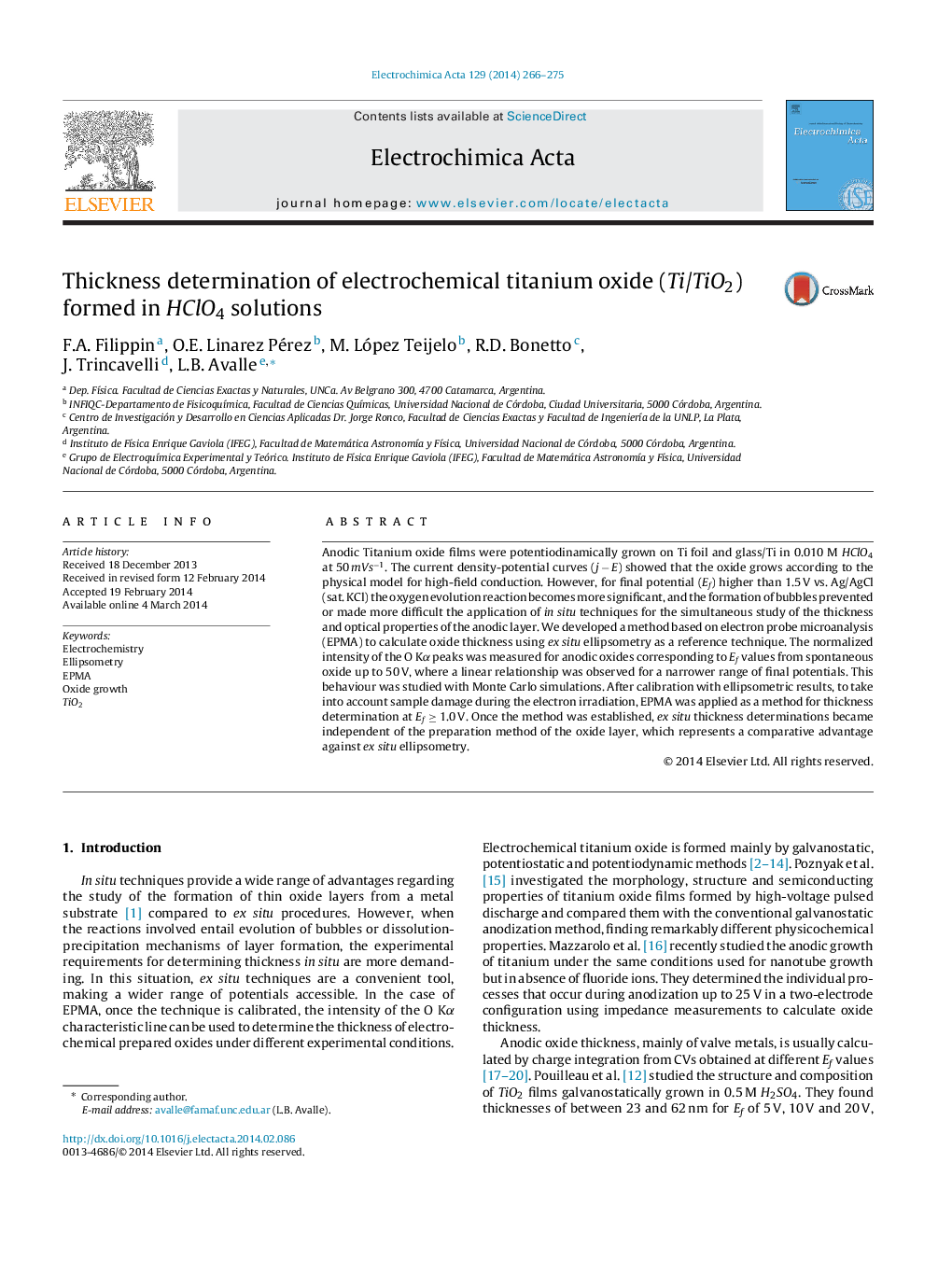| Article ID | Journal | Published Year | Pages | File Type |
|---|---|---|---|---|
| 185952 | Electrochimica Acta | 2014 | 10 Pages |
•Ex situ ellipsometry provides high accuracy thickness values and is used as a reference technique.•The delay observed for the current onset by Cyclic Voltammetry indicates a thicker initial oxide.•After calibration, EPMA was applied as a method for thickness determination at potentials higher than 1 V.
Anodic Titanium oxide films were potentiodinamically grown on Ti foil and glass/Ti in 0.010 M HClO4 at 50 mVs−1. The current density-potential curves (j − E) showed that the oxide grows according to the physical model for high-field conduction. However, for final potential (Ef) higher than 1.5 V vs. Ag/AgCl (sat. KCl) the oxygen evolution reaction becomes more significant, and the formation of bubbles prevented or made more difficult the application of in situ techniques for the simultaneous study of the thickness and optical properties of the anodic layer. We developed a method based on electron probe microanalysis (EPMA) to calculate oxide thickness using ex situ ellipsometry as a reference technique. The normalized intensity of the O Kα peaks was measured for anodic oxides corresponding to Ef values from spontaneous oxide up to 50 V, where a linear relationship was observed for a narrower range of final potentials. This behaviour was studied with Monte Carlo simulations. After calibration with ellipsometric results, to take into account sample damage during the electron irradiation, EPMA was applied as a method for thickness determination at Ef ≥ 1.0 V. Once the method was established, ex situ thickness determinations became independent of the preparation method of the oxide layer, which represents a comparative advantage against ex situ ellipsometry.
Graphical abstractFigure optionsDownload full-size imageDownload as PowerPoint slide
